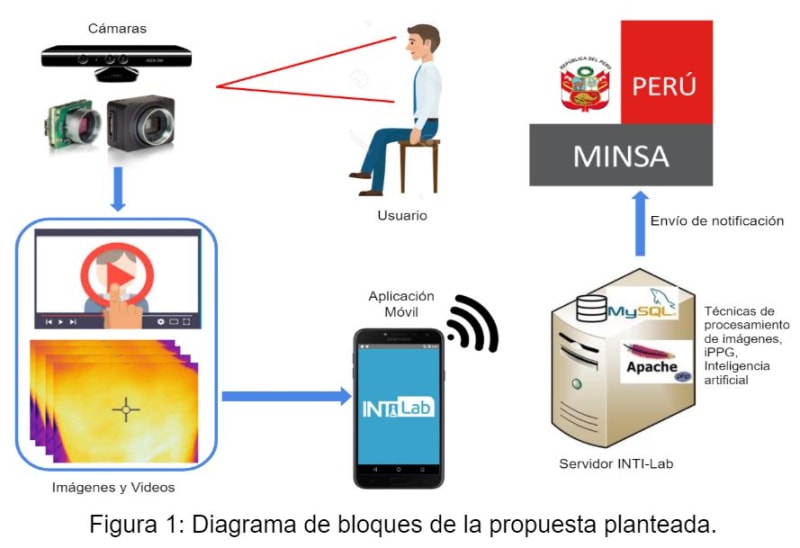COVID-19 is a disease that started in December 2019 in Wuhan, China [1]. COVID-19 is a type of pneumonia caused by a virus belonging to the coronavirus family that affects the pulmonary alveoli and generates respiratory failure [1,2]. According to reports from the World Health Organization (WHO) [3], by April 10, 2020, the outbreak reached 1 521 252 cases and 92 798 deaths. Due to the rapid spread of the contagion, on March 11, 2020, the WHO declared COVID-19 as a pandemic [4].
In Peru, the first case was reported by President Martín Vizcarra at a press conference on Friday, March 6, 2020 [5]. As of April 10, 2020, there are 5 897 cases and 169 deaths from COVID-19 in Peru. Also, the Peruvian government has made line 113 available for people who have symptoms.
This situation becomes complicated since there are many people calling line 113, and the response of the corresponding entity is limited, causing discomfort in the population, and delays in diagnosis. In this sense, the implementation of faster and more massive detection tools is necessary.
Concerning all those mentioned above, the objective of this project is the development of a cost-effective tool to estimate lung capacity without the need for contact with the person. This estimation, combined with thermal images of people's backs, would help detect suspicions of people infected with COVID-19.
The importance of this project lies mainly in the fact of having a tool that allows fast, low cost, ambulatory, and contactless screening on COVID-19. Since the main reason for the spread of COVID-19 is in contact with infected people, contactless testing plays an important role.
This proposal is aimed at the development, adaptation, and validation of a monitoring system for physiological parameters that can be extracted from respiratory dynamics, oxygen level saturation, and the evaluation of frontal thermal mapping of a group of people.
Like this entry?
-
About the Entrant
- Name:Avid Roman-gonzalez
- Type of entry:individual
- Patent status:none

